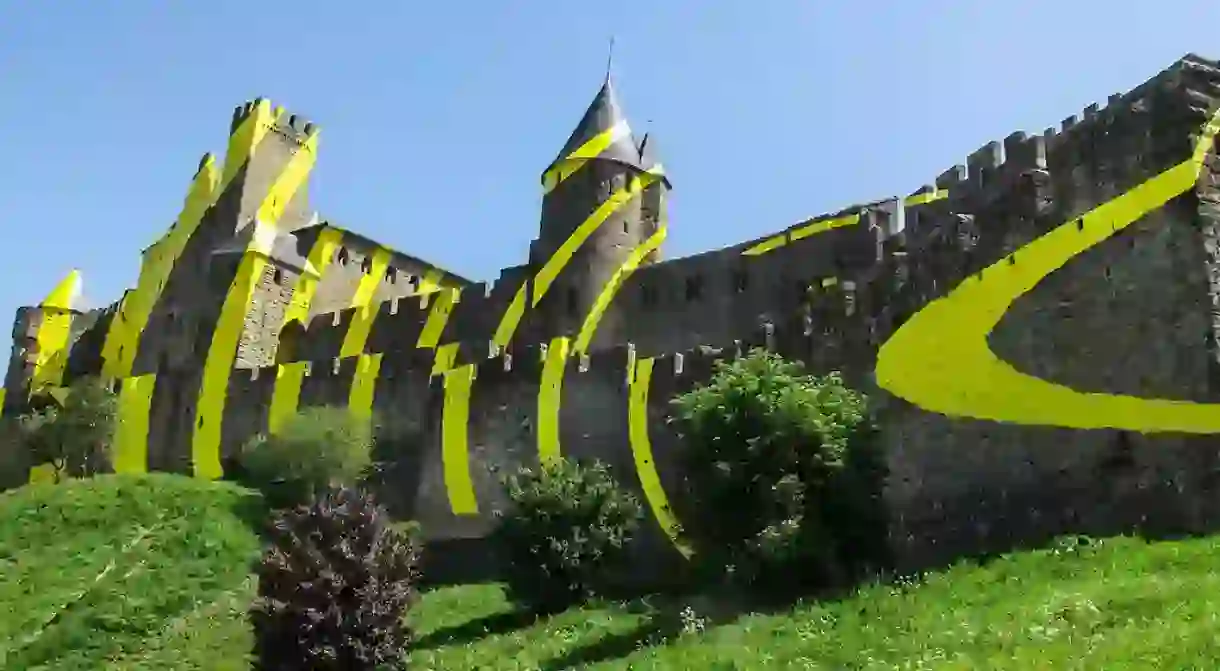Why The Medieval City of Carcassonne Has Been Covered in Yellow Circles

Carcassonne has always been a sight to behold. Ever since the Roman times, this fortress city has been an impressive way to keep people out. Ever since the 19th century and its extensive restoration, it has been bringing people in. This month, it has a new attraction – yellow concentric circles that make your eyes go trippy. It’s all to celebrate a very big birthday for this impressive citadel.
Carcassonne is a southern French medieval walled city
Carcassonne is in the Languedoc region of France, the southern part that runs from Provence and the Mediterranean sea to the Pyrenees and the Atlantic Coast. It’s an area that is known for its magnificent hilltop retreats, which were originally settled in the Roman times to protect and defend the area from invading marauders. Many of the great castles and fortified villages were built up again in the 12th centuries when rebels were fighting the King’s Royal forces. Carcassonne is one of the biggest – a medieval fortress that stands command over the entire city encircling the castle, the cobbled streets and the gothic cathedral.

It was heavily rebuilt in the 19th century after centuries of neglect
By the late 18th century, the city was suffering. No longer useful as a fortress and having lost her military protection and status, much of the city’s buildings and stone had been taken to be used elsewhere and documents show that much of it was collapsing and falling apart. Eugène-Emmanuel Viollet-le-Duc was a French architect in the 19th century who fought very hard to have the city protected and rebuilt. He was a firm advocate of the restoration of France’s medieval buildings and in Carcassonne, he managed to achieve the fortification. What’s more, he managed to instil in the city a need to protect it going forward – he is seen as the grandfather of modern building conservation.

It was listed by UNESCO 20 years ago
Mainly due to the work of Viollet-le-Duc, who succeeded in restoring the city to its former glory, UNESCO decided to give it a listed status in 1997. They noted that it is ‘an outstanding example of a medieval fortified town’. At the time of the announcement, it brought the number of listed sites around the world to 552, including the Macquarie Island for its geoconservation significance and the Mount Kenya National Park for ecological reasons. Twenty years later, there are now over 1,000 (43 in France).

For its 20th anniversary, it has been covered in yellow circles
The National Centre for National Monuments wanted to mark the occasion in a way that seemed special and different. So, to commemorate its 20 years as a UNESCO World Heritage Site, it asked Swiss artist Felice Varini to get involved. He created concentric yellow circles, which are made from aluminum and attached to the castle’s walls. They will be removed in September and will not cause any lasting damage. Not everyone has been impressed by the cost (which hasn’t been revealed) or the dizzying aspects of the artwork, but tourists are flocking in to see this medieval fortress rocking it in the 21st century.













